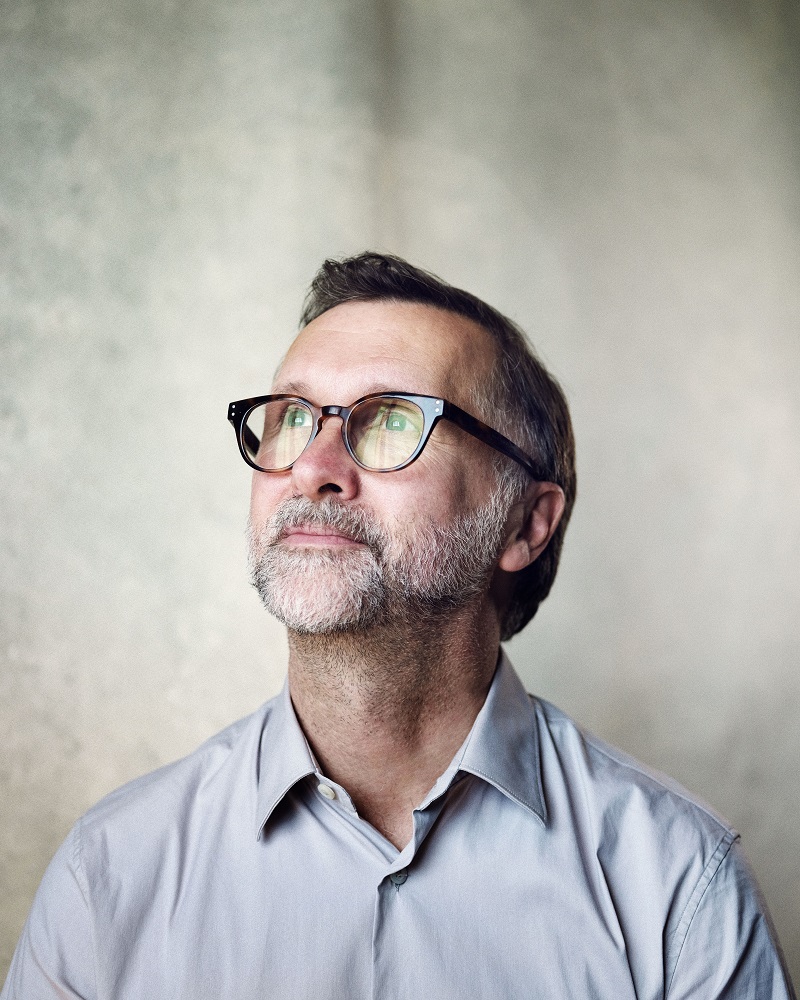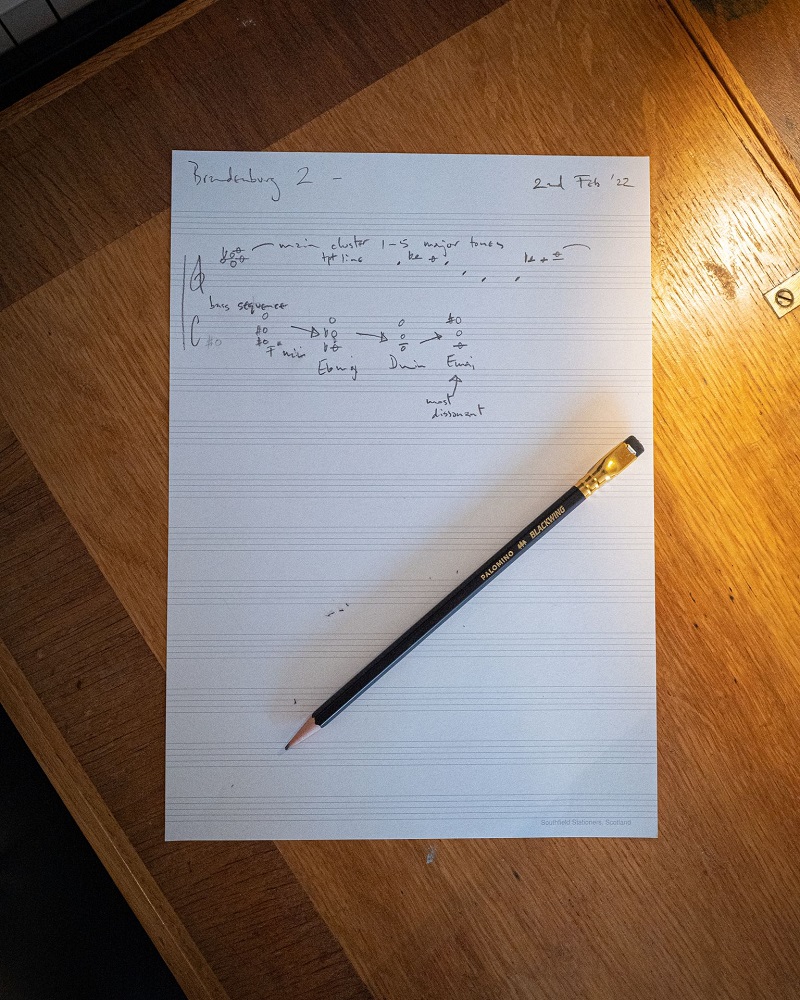There are lots of ways that we respond to great works of art – intellectually and emotionally, then visually, aurally and even by taste and smell, depending on the art in question. I have a habit of screwing my eyes tight shut and bringing to mind a piece of favourite music, or book, or person, and it seems a glowing imprint forms behind your eyelids. You could try it now!
I’ve been fascinated with Bach’s Second Brandenburg Concerto since I was at school, mostly because I was a trumpet player, and Bach’s super-high trumpet part was regarded as the Mount Everest of brass playing – a peak I failed to scale many times. When I close my eyes and think of that summit, it often seems to sparkle and dazzle, and that was enough of a starting point to write The Malling Diamond, one of six commissions, each related to a Brandenburg Concerto, for Music@Malling.
 Once writing began, it was a matter of building on that inspiration. Often the musical idiom of film and TV music is defined by the show and the story, and certainly influenced by the director and producers, but I’ve always had, I think, a core musical voice, from my first compositions as a kid. There’s a particular way of moving from note to note that I think is almost unconscious for composers, but when you add all the notes up, each starts to appear unmistakably their own. That’s what I try to do in my concert work: try and find the next right note to follow the one I’m on. Sometimes that takes quite a while.
Once writing began, it was a matter of building on that inspiration. Often the musical idiom of film and TV music is defined by the show and the story, and certainly influenced by the director and producers, but I’ve always had, I think, a core musical voice, from my first compositions as a kid. There’s a particular way of moving from note to note that I think is almost unconscious for composers, but when you add all the notes up, each starts to appear unmistakably their own. That’s what I try to do in my concert work: try and find the next right note to follow the one I’m on. Sometimes that takes quite a while.
One particular aspect of writing this piece included factoring in who the music was responding to. That is, the particular group of players Bach uses in Brandenburg Concerto No 2 – woodwind, strings, trumpet and harpsichord, in two separate groups. This particular line-up gives lots of possibilities for interesting combinations, but on the other hand, there are also a few balance issues. To make a particular instrument really stand out from the others, you need to dig a pretty big hole in the orchestration. There’s a section in the middle of the piece where a trumpet solo is accompanied by a low shimmer of strings, down at the bottom of their range to really let the trumpet shine out over the top. In other places, each of the players has an equal role in matters.
 Part of the great joy and challenge of writing a new piece is that it is both a literally and figuratively blank piece of paper (when it comes to writing for film and TV, there is so much that is already given). In this case, I found myself creating a musical “building” on the page.
Part of the great joy and challenge of writing a new piece is that it is both a literally and figuratively blank piece of paper (when it comes to writing for film and TV, there is so much that is already given). In this case, I found myself creating a musical “building” on the page.
There's a 10-note theme that we hear right in bar one, which becomes nine, then eight, and counts down to just a single last note, before the underlying momentum of the piece kicks in. It then appears to count back up from one note to 10 notes over the rhythmic motion of the group, and already it feels like we’re in a series of reflecting surfaces, or facets of a jewel. After the trumpet solo, which felt to me like a lost image trapped right inside the diamond itself, the jewel turns again and we count our way back out into the light.
So although The Malling Diamond isn’t a story or a case to solve in the same way as in a TV drama, I hope there’s structure and form, and a journey that the players and listeners can go on. My own journey with the piece included some hidden gems. Like many of us, I’ve been working from home recently, and found a beautiful 1950s architect’s desk for my study, made of Yorkshire oak, on eBay (pictured below). I’ve been cleaning it up as I wrote the piece and drafted out some of the number patterns. I think in another life I would have liked to design buildings, as music and architecture have more in common than we may think.  One of my favourite places to visit in the whole of London is the music manuscript cabinet in the British Library. I firmly recommend it, if you’ve not been. In it you can see handwritten manuscripts from centuries ago, next to much more contemporary pieces. I always find it stunning how similar the process is, of putting pencil to paper, but how different the times we live in are. That’s what shines through this particular commission: so as fresh, committed performances of old works show them in a new light, so new works written for those same instruments tell us about the times we live in now.
One of my favourite places to visit in the whole of London is the music manuscript cabinet in the British Library. I firmly recommend it, if you’ve not been. In it you can see handwritten manuscripts from centuries ago, next to much more contemporary pieces. I always find it stunning how similar the process is, of putting pencil to paper, but how different the times we live in are. That’s what shines through this particular commission: so as fresh, committed performances of old works show them in a new light, so new works written for those same instruments tell us about the times we live in now.














Add comment